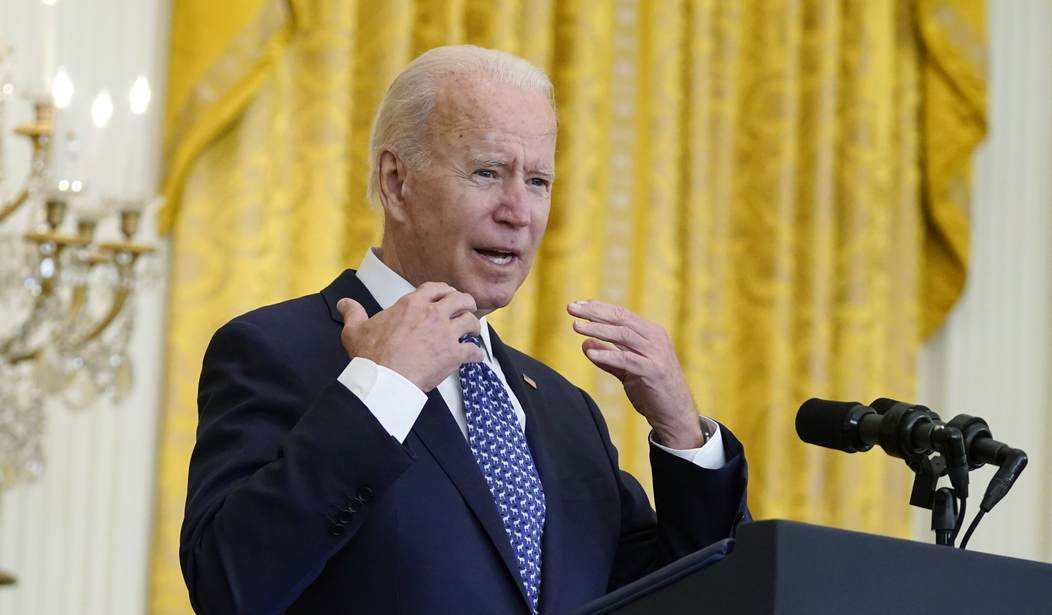Maybe the White House should have saved its celebration for today. Not that the Producer Price Index number shows a massive improvement in today’s report, but at least it went in the right direction, unlike yesterday’s Consumer Price Index.
Thanks to a big dropoff on the monthly prices for goods on final demand, the overall PPI dropped by 0.1% in August, but still remains high at 8.7% year-on-year. There’s less to this than meets the eye, however:
The Producer Price Index for final demand fell 0.1 percent in August, seasonally adjusted, the U.S. Bureau of Labor Statistics reported today. Final demand prices decreased 0.4 percent in July and advanced 1.0 percent in June. (See table A.) On an unadjusted basis, the index for final demand moved up 8.7 percent for the 12 months ended in August.
In August, the decrease in the index for final demand is attributable to a 1.2-percent decline in prices for final demand goods. In contrast, the index for final demand services advanced 0.4 percent.
Prices for final demand less foods, energy, and trade services moved up 0.2 percent in August following a 0.1-percent rise in July. For the 12 months ended in August, the index for final demand less foods, energy, and trade services increased 5.6 percent.
That’s not bad news, but it’s not great news either, at least not yet. The big drop in goods month-on-month is entirely related to energy, which dropped 6% in August. The BLS estimates that the fall of gasoline prices accounts for three-quarters of the month-on-month decrease for final demand in goods, especially in the food categories.
When calculating for “core PPI,” less food and energy, the picture looks a bit grimmer. Check out the rightmost column for the month-on-month changes:

Almost every category of goods still has prices going up with gas and food out of the calculation. The problem with that is that gas prices are likely to start going up, as Janet Yellen warned over the weekend. The switch from summer formulations will cause an organic price blip on its own, but there are other interventions and lack thereof to consider as well. The G-7 plans to impose a new sanctions regime to force Russian oil off the market without any additional supply to replace it. At the same time, the drain off of the Strategic Petroleum Reserve will have to end soon and the oil replaced to allow for the strategic use of the SPR.
In other words, the gas bubble here is almost certain to be short-lived. Price increases in the production line have not been short-lived at all, as this chart of year-on-year PPI results shows:

Even with the month-on-month drop, the year-on-year for final demand on goods remains in double digits at 12%. Inflation’s not over in the PPI index, not unless gas keeps declining — and without a lot more supply, that’s not going to happen.
Thus far Wall Street has not reacted to the PPI report, bouncing up only 40 points after the worst sell-off yesterday in more than two years. CNBC’s Jeff Cox explains that this is only a “mild respite,” and not much of an indicator of improvement, especially in the service sector:
The prices that producers receive for goods and services declined in August, a mild respite from inflation pressures that are threatening to send the U.S. economy into recession.
The producer price index, a gauge of prices received at the wholesale level, declined 0.1%, according to a Bureau of Labor Statistics report Wednesday. Excluding food, energy and trade services, PPI increased 0.2%. …
Wholesale services prices increased 0.4% for the month, indicating a further transition for a pandemic-era economy where goods inflation soared. Final demand services prices increased 0.4% for the month, with the balance of that coming from a 0.8% increase in trade services.
Far from showing inflation under control, this PPI report shows the infection spreading from goods to services. A wage-price spiral may come next — unless the Fed acts soon. And on that score …
Following the Tuesday report, stocks tanked and expectations surged for Federal Reserve action at its meeting next week. Stock market futures were positive after the PPI report while Treasury yields were higher as well.
Markets were debating between a half percentage point and three-quarter point interest rate increase. After the release, the market fully priced in a three-quarter point move, and there is now a 1-in-3 chance of a full percentage point hike, according to fed funds futures data tracked by the CME Group.
Best guess: the Fed sticks to the 0.75% increase this time, and waits for the next round of reports in October. But if the inflation infection is really spreading to the service sector, Jerome Powell will have to escalate soon.








Join the conversation as a VIP Member